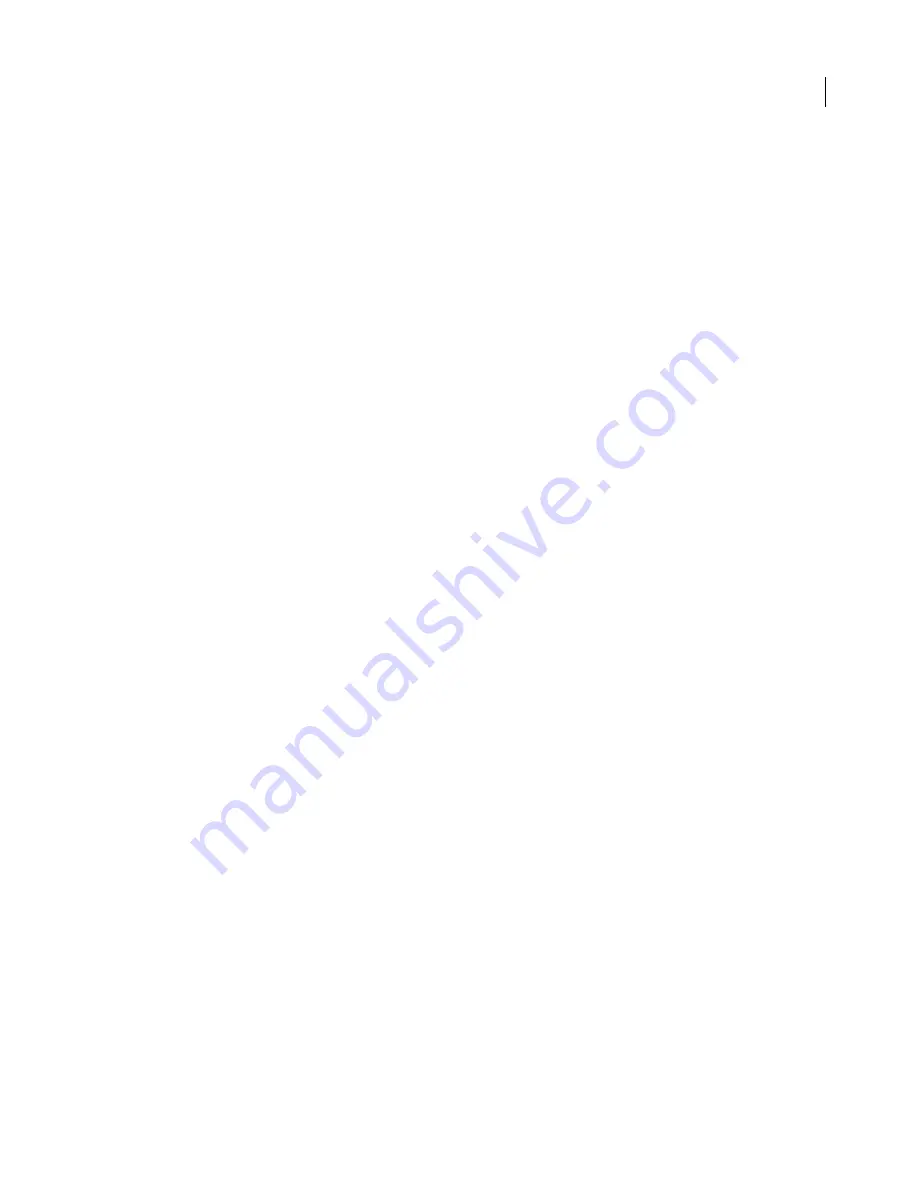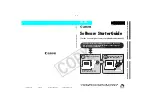
530
ADOBE PHOTOSHOP CS2
User Guide
Using a Lighting Effects texture
The Texture Channel in the Lighting Effects dialog box lets you use a grayscale texture, such as paper or water, to
control how light reflects off an image. You can use any channel in your image (including a channel copied from a
different image) as a texture, or you can create your own texture. For an embossed text effect, use a channel with
white text on a black background, or vice versa.
To use the Texture Channel in the Lighting Effects dialog box
1
If necessary, create an alpha channel in your image and add texture. To use a texture from another image, copy
and paste the image into a new channel.
2
In the Lighting Effects dialog box, choose a channel from the Texture Channel menu: the image’s Red, Green, or
Blue channel or any channel added to the image.
3
Select White Is High to raise the white parts of the channel from the surface. Deselect this option to raise the dark
parts.
4
Drag the Height slider to vary the texture from Flat (0) to Mountainous (100).
See also
“To create an alpha channel and add a mask” on page 342
Loading images and textures
To load images and textures
To produce their effects, some filters load and use other images, such as textures and displacement maps. These filters
include the Conté Crayon, Displace, Glass, Lighting Effects, Rough Pastels, Texture Fill, Texturizer, Underpainting,
and Custom filters. Not all of these filters load images or textures in the same way.
1
Choose the filter you want from the appropriate submenu.
2
In the filter’s dialog box, choose Load Texture from the Texture pop-up menu, and locate and open a texture
image.
All textures must be in the Photoshop format. Most filters use only the grayscale information of a color file.
Improving filter performance
To improve filter performance
Some filter effects can be memory-intensive, especially when applied to a high-resolution image.
❖
You can do one of the following to improve performance:
•
Try out filters and settings on a small portion of an image.
•
Apply the effect to individual channels—for example, to each RGB channel—if the image is large and you’re having
problems with insufficient memory. (With some filters, effects vary if applied to the individual channel rather than
the composite channel, especially if the filter randomly modifies pixels.)
Содержание PHOTOSHOP CS2
Страница 1: ...Chapter 1 Copyright User Guide ...
















































